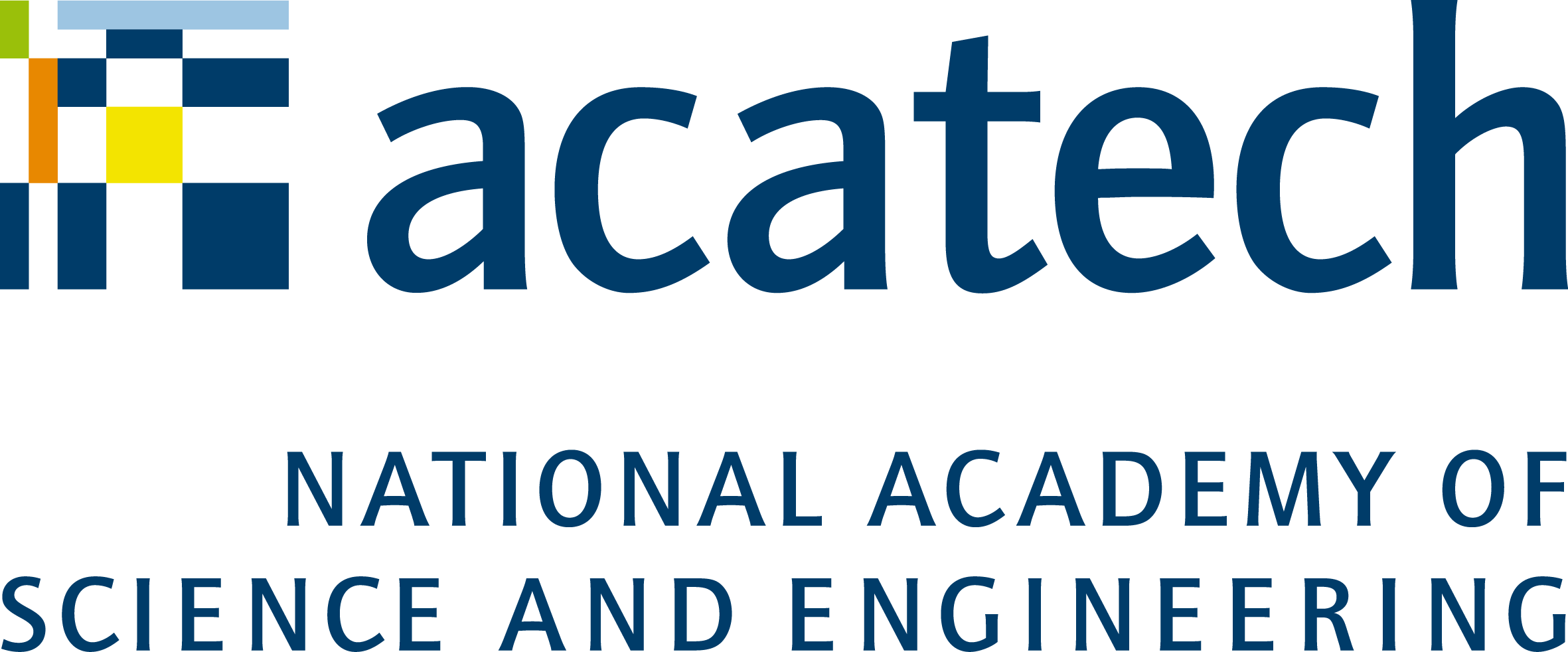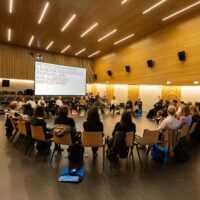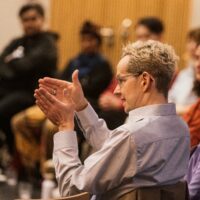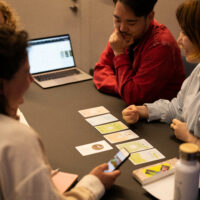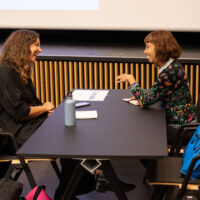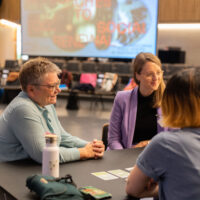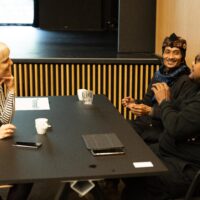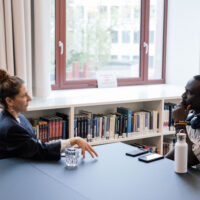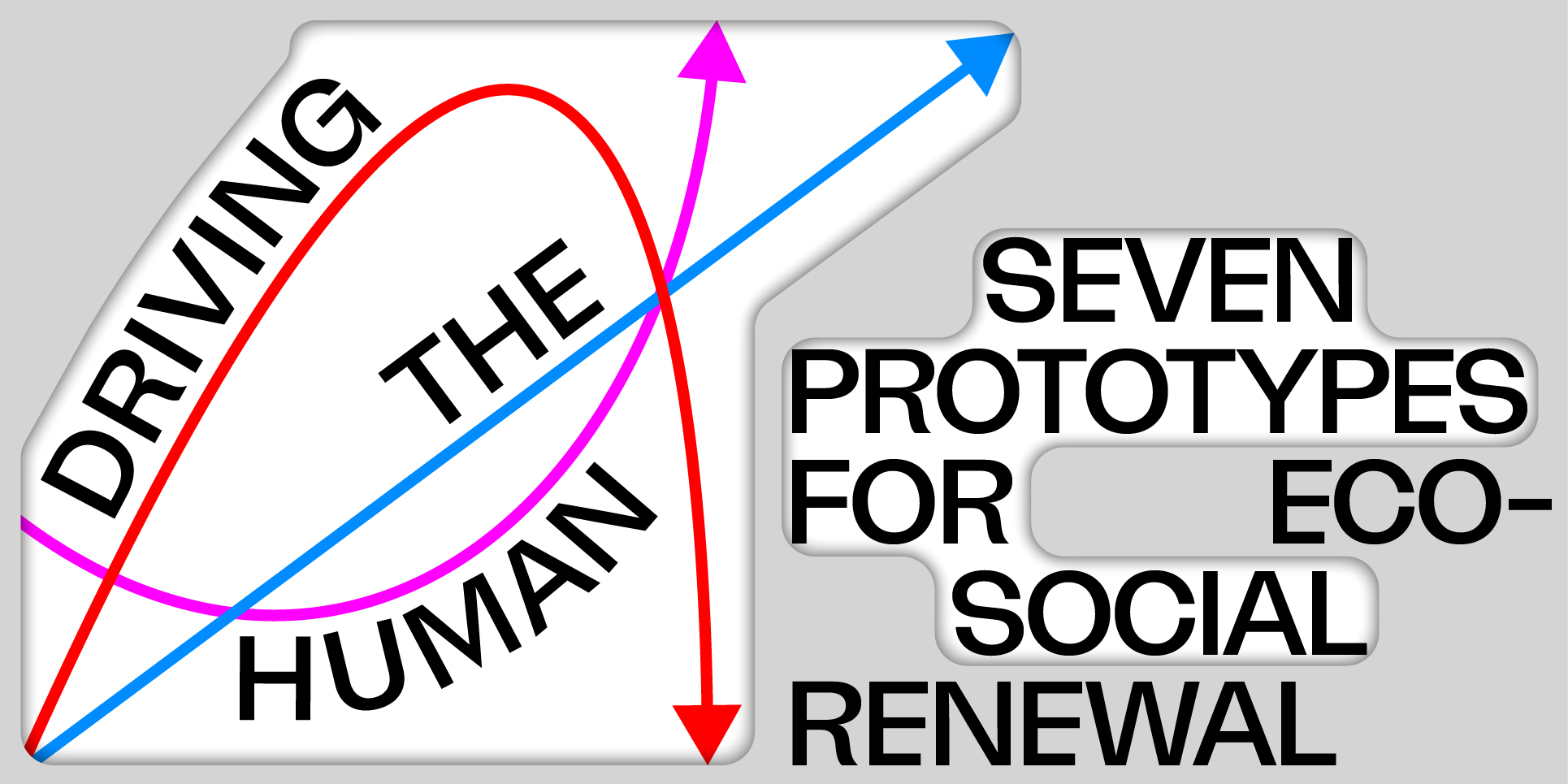Art and science: how openness creates new ideas
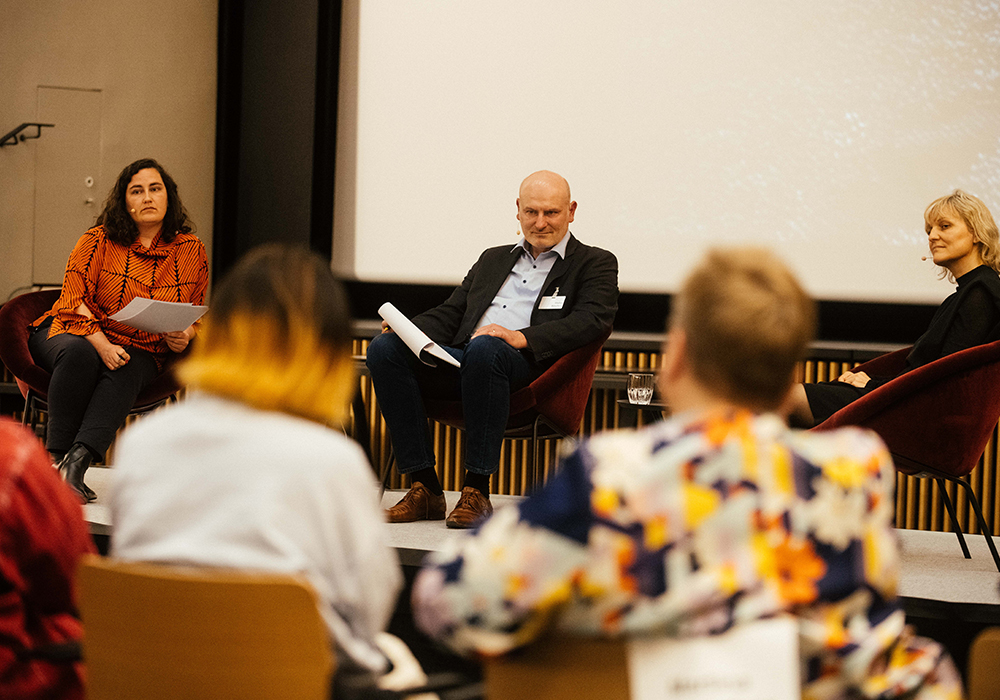
Munich, 11 May 2022
How can we develop holistic solutions in an increasingly complex world? This question was debated at the panel discussion “Towards Eco-social Renewal: blueprints for collaboration between science and the arts” held on 30 April at the Amerikahaus in Munich. The discussion concluded that a transdisciplinary approach is key, since many problems are simply too big to be solved by any single discipline. During the event, acatech Member Vera Meyer stressed the importance of collaboration.
Panellists Vera Meyer and Stefan Böschen discussed how art and science can work together and what this can unlock. acatech Member Vera Meyer is Professor of Applied and Molecular Microbiology at TU Berlin and a freelance artist. Stefan Böschen is Chair of Technology and Society at RWTH Aachen University’s Human Technology Center and Director of the Käte Hamburger Kolleg: Cultures of Research.
Art and science: different strengths, but a lot in common
Stefan Böschen kicked off the panel discussion by stressing the importance of transdisciplinary collaboration in our complex world. It often takes experts from different disciplines to fully explain a manifold situation. However, transdisciplinary collaboration is hindered by the trend towards ever greater specialisation. How can we find a common language if every discipline has different practices?
In a nutshell, the answer proposed by the Driving the Human project that organised the panel discussion is for different disciplines to work together in a small setting and reflect on their own work. The seven teams involved in the project are combining artistic and scientific methods in what Stefan Böschen described as an excellent example of collaboration between different disciplines. In fact, because the strengths of art and science complement each other, combining the two disciplines provides a unique opportunity to redefine the way we think about things. As Stefan Böschen explained, while science is good at focusing on specific questions, art can help to set the answers to these questions in a wider social context.
Vera Meyer went one step further, arguing that art and science should not only be thought of as symbiotic disciplines. She maintained that artists and researchers actually have a lot in common. Both are curious by nature and are interested in understanding socially relevant questions and communicating their findings.
The views expressed by Stefan Böschen and Vera Meyer were corroborated by Driving the Human’s seven project teams during the subsequent Q&A. According to Romy Kaiser of the Human-Bacteria Interfaces team, it is a great opportunity that her colleagues come from different disciplines. Although it can sometimes be difficult to make yourself understood, the process where team members are constantly asking for clarifications ultimately results in everyone gaining a better shared understanding of the issue. Iris Qu of the Do AIs Dream of Climate Chaos? team also finds transdisciplinarity rewarding, since it provides an opportunity to observe and appreciate several different disciplines at the same time while also giving people a chance to temporarily step outside their own particular discipline.
The common thread running through all of these contributions was openness towards the methods used by other disciplines. Vera Meyer and Stefan Böschen alluded to this openness several times during the discussion, identifying it as a key requirement for transdisciplinarity. “The more open we are, the better we get,” said Vera Meyer in her closing remarks.
The Driving the Human project
The panel discussion was part of a mentoring event that took place from 29 April to 1 May. Artists and researchers made suggestions about how the seven project teams might continue their work. The results will be presented at a festival in Berlin at the end of 2022. An overview of the workshops is available here.
The Driving the Human project is a collaboration between acatech and three other partner institutions: the mentoring platform Forecast, Karlsruhe University of Arts and Design (HfG) and the Center for Art and Media Karlsruhe (ZKM).
